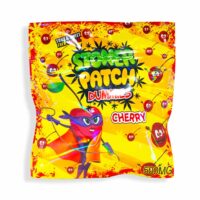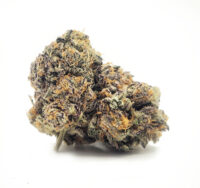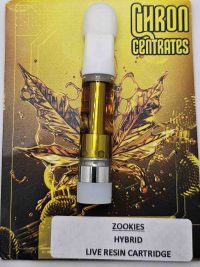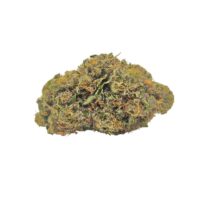Welcome to the world of Cannabis Honey Oil – a concentrate that’s taking the cannabis community by storm! Did you know that honey oil can contain up to 90% THC, making it one of the most potent cannabis products available? That’s right, folks! This golden elixir is not for the faint of heart, but for those seeking the pinnacle of cannabis experiences. As a connoisseur’s dream, honey oil offers an unparalleled combination of potency, flavor, and versatility that’s sure to elevate your cannabis journey. Let’s dive into the sticky, sweet world of Cannabis Honey Oil and discover why it’s become the go-to concentrate for discerning enthusiasts like you and me!
In this article, we’ll explore:
- The essence of Cannabis Honey Oil: Its definition, origin, and extraction methods
- Potency and power: Understanding the high THC content and concentration levels
- Flavor profiles and terpenes: The unique taste and aroma characteristics that set honey oil apart
- Versatility in consumption: Various methods to enjoy this potent concentrate
- Medical applications: Potential therapeutic benefits and research findings
- Craftsmanship: The art of producing high-quality honey oil
- Legal landscape: Current regulations and availability
What is Cannabis Honey Oil?
Cannabis Honey Oil, often simply called “honey oil,” is a highly concentrated form of cannabis extract. This golden, viscous substance is renowned for its potency and purity. But what exactly sets it apart from other concentrates?
Honey oil is typically produced through solvent-based extraction methods, most commonly using butane or CO2. These processes strip the essential oils, cannabinoids, and terpenes from the cannabis plant material, resulting in a highly concentrated product. The name “honey oil” comes from its golden color and thick, sticky consistency, reminiscent of natural honey.
Unlike some other concentrates, honey oil undergoes a thorough purging process to remove residual solvents, ensuring a clean and pure final product. This meticulous process is what gives honey oil its reputation as a premium concentrate.
Key differences between honey oil and other cannabis concentrates include its consistency, potency, and versatility. While shatter is known for its glass-like texture and wax for its crumbly consistency, honey oil maintains a thick, liquid form. This unique texture makes it incredibly versatile for various consumption methods, from dabbing to vaping and even incorporating into edibles.
The Potency of Honey Oil
When it comes to potency, Cannabis Honey Oil is in a league of its own. With THC concentrations ranging from 70% to 90%, it’s significantly more potent than traditional cannabis flower, which typically contains 15-25% THC.
Several factors influence the potency of honey oil:
- Quality of starting material
- Extraction method used
- Purging and refining processes
- Storage conditions
Compared to other cannabis products, honey oil’s potency is truly remarkable. For instance, while a high-quality cannabis flower might contain 25% THC, the same amount of honey oil could contain three to four times that amount. This concentration makes honey oil a preferred choice for experienced users seeking intense effects or medical patients requiring high doses of cannabinoids.
A word of caution: With great potency comes great responsibility. Due to its high THC content, it’s crucial to approach honey oil with respect and start with small doses, especially for newcomers. Always prioritize responsible consumption and be aware of your tolerance levels.
Flavor Profile and Terpenes
One of the most captivating aspects of Cannabis Honey Oil is its rich and complex flavor profile. The extraction process not only concentrates cannabinoids but also preserves a wide spectrum of terpenes, the aromatic compounds responsible for the distinctive flavors and aromas of different cannabis strains.
Terpenes play a crucial role in the overall experience of consuming honey oil. They contribute to the entourage effect, potentially enhancing or modulating the effects of cannabinoids. Some common terpenes found in honey oil include:
- Myrcene: Known for its earthy, musky aroma
- Limonene: Offers citrusy, uplifting notes
- Pinene: Provides a fresh, pine-like scent
- Caryophyllene: Contributes spicy, peppery undertones
The strain selection for honey oil production significantly impacts its flavor profile. Popular strains used for honey oil extraction include OG Kush, known for its earthy and piney notes, and Sour Diesel, celebrated for its pungent, fuel-like aroma.
Flavor variations in honey oil can be as diverse as the cannabis strains themselves. From sweet and fruity to earthy and spicy, each batch of honey oil offers a unique sensory experience. These flavor profiles not only enhance the enjoyment of consumption but can also influence the overall effects, making honey oil a true connoisseur’s delight.
Versatility and Consumption Methods
One of the most appealing aspects of Cannabis Honey Oil is its incredible versatility. This golden concentrate can be enjoyed in various ways, catering to different preferences and experiences. Let’s explore some popular consumption methods:
Dabbing 101: A Quick Guide
Dabbing is perhaps the most popular method for consuming honey oil. This process involves vaporizing the concentrate on a hot surface and inhaling the resulting vapor. Here’s a quick guide to dabbing honey oil:
- Heat your dab rig’s nail (typically quartz, titanium, or ceramic) with a torch.
- Allow the nail to cool slightly (temperature is crucial for optimal flavor and effects).
- Use a dab tool to apply a small amount of honey oil to the nail.
- Inhale the vapor through the rig’s mouthpiece.
- Cap the nail with a carb cap to control airflow and maximize vapor production.
Dabbing offers intense flavors and rapid onset of effects, making it a favorite among enthusiasts. However, it requires some specialized equipment and practice to master.
Vaporizing Honey Oil: Tips and Tricks
Vaporizing is another popular and convenient method for consuming honey oil. Many modern vaporizers are designed to handle concentrates like honey oil. Here are some tips for vaporizing honey oil:
- Use a vaporizer specifically designed for concentrates or with a concentrate attachment.
- Start with a small amount – a little goes a long way with honey oil.
- Experiment with temperature settings to find your sweet spot for flavor and effects.
- Clean your vaporizer regularly to maintain optimal performance and flavor.
Vaporizing offers a more discreet and portable option compared to dabbing, making it ideal for on-the-go consumption.
Beyond dabbing and vaporizing, honey oil can also be incorporated into edibles. Its potency and ease of measurement make it an excellent addition to homemade cannabis-infused treats. However, remember that the effects of edibles can be more intense and longer-lasting, so start with a low dose and be patient.
For those seeking convenience, pre-filled vape cartridges containing honey oil are becoming increasingly popular. These offer a hassle-free way to enjoy the potency and flavor of honey oil without the need for additional equipment.
Medical Applications of Cannabis Honey Oil
While many enjoy Cannabis Honey Oil for recreational purposes, it’s also gaining recognition for its potential therapeutic benefits. The high concentration of cannabinoids in honey oil makes it an attractive option for medical cannabis patients seeking potent relief.
Some potential therapeutic applications of honey oil include:
- Pain management
- Anxiety and stress relief
- Sleep disorders
- Appetite stimulation
- Nausea reduction
Research into the medical applications of cannabis concentrates like honey oil is ongoing. While anecdotal evidence is promising, more clinical studies are needed to fully understand the efficacy and long-term effects of these potent extracts.
Many patients report that honey oil provides faster and more intense relief compared to traditional cannabis flower. The ability to precisely dose with honey oil is particularly beneficial for medical users who need to manage their symptoms effectively.
It’s important to note that medical use of cannabis concentrates should always be done under the guidance of a healthcare professional. The high potency of honey oil means that careful dosing is crucial to avoid unwanted side effects.
The Art of Crafting Quality Honey Oil
Creating high-quality Cannabis Honey Oil is truly an art form that requires skill, precision, and attention to detail. The process begins with selecting premium cannabis flower as the starting material. The quality of the input directly influences the potency, flavor, and overall quality of the final product.
Extraction techniques play a crucial role in the quality of honey oil. The two most common methods are:
- Butane Extraction: This method uses butane as a solvent to strip cannabinoids and terpenes from the plant material. It’s known for producing a clean, potent extract but requires careful handling due to the flammable nature of butane.
- CO2 Extraction: This method uses pressurized carbon dioxide to extract cannabinoids. It’s considered safer and more environmentally friendly than butane extraction but may require more specialized equipment.
After extraction, the purging process is crucial for removing residual solvents and refining the oil. This typically involves applying heat and vacuum pressure to evaporate any remaining solvents, resulting in a clean, pure concentrate.
Quality control measures, including lab testing, are essential in the production of premium honey oil. These tests check for potency, terpene profiles, and the presence of any contaminants or residual solvents. Reputable producers will always provide lab results for their products, ensuring transparency and safety for consumers.
Legal Considerations and Availability
The legal status of Cannabis Honey Oil varies widely depending on your location. In regions where cannabis is legal for medical or recreational use, honey oil is often available through licensed dispensaries. However, in many parts of the world, it remains illegal or in a legal grey area.
Even in places where cannabis is legal, there may be specific regulations surrounding the production and sale of concentrates like honey oil. These regulations often address concerns about the safety of extraction processes and the high potency of the final product.
For those in areas where honey oil is legally available, it’s crucial to purchase from reputable, licensed sources. This ensures that you’re getting a safe, lab-tested product that complies with local regulations.
The availability of honey oil can vary even in legal markets. While some dispensaries may carry a wide selection of concentrates, others might have a more limited offering. Online ordering and delivery services have made access easier in some regions, but always verify the legality and legitimacy of these services in your area.
As the cannabis industry continues to evolve, we may see changes in the legal landscape surrounding concentrates like honey oil. Stay informed about the laws in your area and always prioritize safety and legality in your cannabis consumption.
Elevating Your Cannabis Experience
As we’ve explored, Cannabis Honey Oil is truly a connoisseur’s concentrate dream come true! Its unmatched potency, rich flavor profile, and incredible versatility make it a standout choice for cannabis enthusiasts seeking the ultimate experience. Whether you’re dabbing, vaping, or incorporating it into your favorite recipes, honey oil offers a world of possibilities to elevate your cannabis journey.
Remember, with great potency comes great responsibility – always consume mindfully and start low and slow. As you venture into the world of honey oil, take the time to appreciate the craftsmanship behind this golden elixir and the nuanced experiences it can offer.
Are you ready to dive into the golden world of Cannabis Honey Oil? Your next level cannabis adventure awaits! Just remember to always prioritize safety, legality, and responsible consumption as you explore the incredible potential of this premium concentrate.
Disclaimer: The legal status of cannabis and its derivatives varies by region. Always follow local laws and regulations regarding the possession, use, and distribution of cannabis products. This article is for informational purposes only and should not be considered legal or medical advice.







